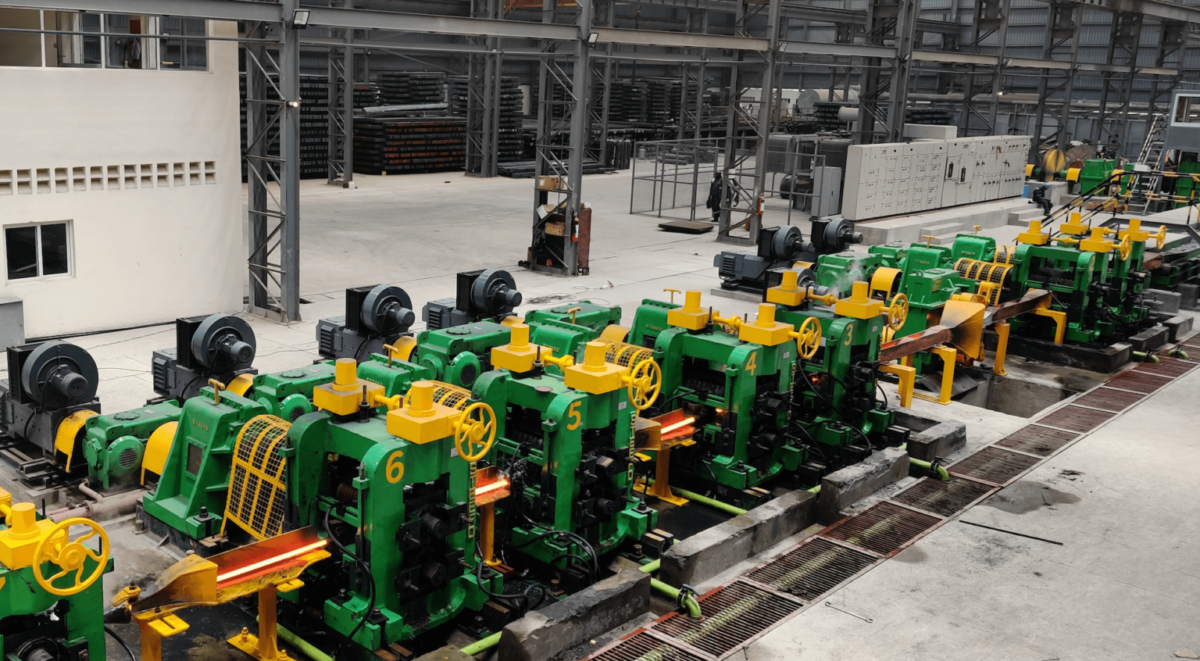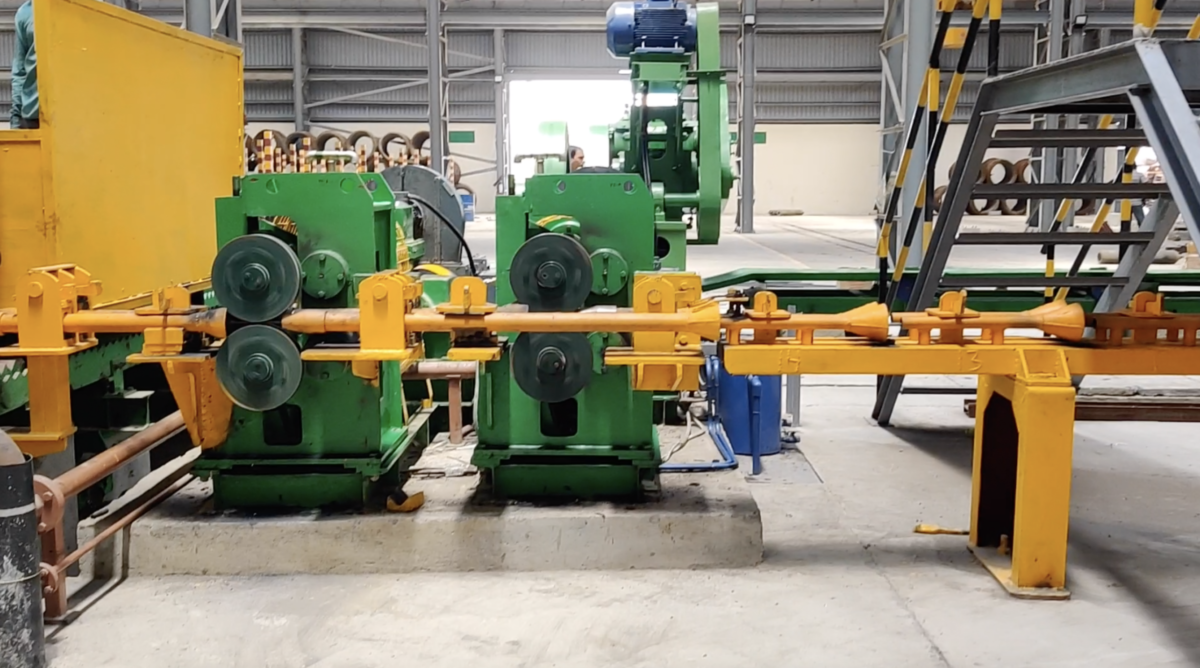DC motors play a crucial role in the efficient operation of steel plants. These motors are responsible for providing the necessary power and control required to drive various components. Understanding the factors that influence the efficiency of DC motors in rolling mills is essential for businesses looking to invest in high-quality motors and rolling mill components. This article aims to identify and discuss these factors while proposing solutions to address efficiency-related issues.
Overview of DC Motors in Steel Plants
DC motors serve as the prime component in rolling mills, providing the mechanical power required to drive various equipment and machinery. They operate based on the principles of electromagnetic induction, with basic components including the armature, field winding, commutator, and brushes. By converting electrical energy into mechanical energy, these motors enable the rolling process to proceed smoothly and efficiently.
Factors that Impact Efficiency
Electrical Factors
Various electrical factors can influence efficiency in DC motors:
- Armature resistance: Higher resistance leads to increased power losses and reduced efficiency. Minimising armature resistance through the use of high-quality conductors and appropriate wire gauges improves motor efficiency.
- Field winding resistance: Higher resistance affects the field current and reduces motor performance. Using low-resistance field windings and optimising winding design helps improve motor efficiency.
- Brush contact resistance: Poor brush contact increases power losses and diminishes motor efficiency. Regular inspection and maintenance of brushes, along with the use of high-quality brushes, help reduce contact resistance.
- Commutation: Inefficient commutation causes increased sparking, leading to energy losses. Optimising the commutation system through improved brush design, advanced commutator materials, and precise timing adjustments can enhance motor efficiency.
- Voltage regulation: Poor voltage regulation affects the motor’s performance and efficiency. Employing voltage regulation techniques, such as voltage stabilisers and regulators, helps maintain a stable power supply and improves motor efficiency.
Mechanical Factors
Various mechanical factors also influence efficiency in DC motors:
- Friction and bearing losses: High friction and bearing losses increase power consumption and reduce efficiency. Proper lubrication and maintenance of bearings, along with the use of low-friction materials, minimise these losses and enhance motor efficiency.
- Load characteristics: Uneven or excessive loads impact the motor’s efficiency. Designing the rolling mill system to ensure uniform load distribution and employing load balancing mechanisms optimise motor efficiency.
- Belt and pulley efficiency: Inefficient transmission systems introduce power losses. Using high-quality belts and pulleys with low slippage and proper tensioning improves power transmission efficiency.
- Alignment and coupling losses: Misalignment and coupling issues lead to additional power losses and decreased efficiency. Regular alignment checks, coupling maintenance, and using flexible couplings help minimise these losses and improve motor efficiency.
Thermal Factors
Thermal factors can significantly affect DC motor efficiency:
- Temperature rise: Excessive heat can reduce motor efficiency and potentially damage insulation. Implementing efficient cooling mechanisms, such as fan cooling or liquid cooling, and monitoring motor temperature ensure optimal performance and efficiency.
- Cooling mechanisms: Inadequate cooling systems limit heat dissipation and affect motor performance. Ensuring proper cooling system design, maintenance, and optimising airflow enhance motor efficiency.
- Insulation Quality: Poor insulation can result in increased heat generation and reduced efficiency. Using high-quality insulation materials and regularly inspecting and replacing damaged insulation prevent energy losses and maintain motor efficiency.
Influence of Power Supply
The power supply quality and stability can impact DC motor efficiency:
- Voltage Variations and Harmonics: Fluctuations and harmonics in the power supply can impact motor performance and efficiency. Employing voltage stabilisers, harmonic filters, and power conditioning equipment helps mitigate these issues.
- Power Quality and Stability: Poor power quality and instability affect motor operation and efficiency. Implementing power quality monitoring systems and addressing power supply issues improve motor efficiency.
- Voltage Drop and Power Losses: Voltage drops in the power supply can lead to decreased motor efficiency. Ensuring proper cable sizing, reducing cable lengths, and addressing voltage drop issues enhance motor performance and efficiency.
Control Systems and Efficiency Optimization
Efficiency can be optimised through advanced control systems and techniques:
- Speed Control Methods: Implementing efficient speed control mechanisms, such as variable frequency drives (VFDs) or electronic DC drives, ensures optimal motor operation under varying load conditions.
- Torque Control Methods: Proper torque control helps maintain efficiency and prevents overload. Using closed-loop control systems and torque control algorithms improves motor efficiency.
- Current and Power Control Techniques: Monitoring and controlling current and power consumption improve motor efficiency. Implementing energy-efficient control algorithms and power management systems optimises motor performance.
- Efficiency Improvement Techniques: Employing modern motor technologies, such as high-efficiency DC motors and power electronics, and utilising regenerative braking systems improve motor efficiency.
Maintenance and Operational Considerations
Proper maintenance practices contribute to DC motor efficiency:
- Regular Inspection and Preventive Maintenance: Routine inspections and preventive maintenance help identify and address potential issues that may impact motor efficiency. Regularly checking motor components, electrical connections, and insulation integrity ensures optimal motor performance.
- Lubrication and Cooling System Maintenance: Proper lubrication and cooling system maintenance ensure optimal motor performance. Regularly checking and replacing lubricants, cleaning cooling systems, and maintaining proper coolant flow improve motor efficiency.
- Brush and Commutator Maintenance: Regular inspection and maintenance of brushes and commutators prevent power losses and maintain efficiency. Cleaning, aligning, and replacing brushes and commutators as necessary enhance motor performance.
- Proper Alignment and Load Distribution: Ensuring proper alignment and load distribution minimises power losses and maximises motor efficiency. Regularly checking alignment, balancing loads, and employing precision alignment techniques contribute to improved motor efficiency.
Following a comprehensive maintenance plan ensures sustained motor efficiency and reliability. Regular inspections, preventive maintenance, and timely repairs minimise efficiency losses and extend motor lifespan.
How Premium Quality DC Motors Is the Best Way to Enhance Efficiency
Investing in premium quality DC motors is the most effective approach to enhance the efficiency of operations in steel plants. While it may require a higher upfront investment, the long-term benefits outweigh the initial costs. Here are the reasons why investing in high-quality DC motors is crucial for maximising efficiency:
1. Enhanced Performance and Reliability
Premium quality DC motors are engineered with superior materials, advanced design, and precision manufacturing processes. These motors offer higher power output, improved torque characteristics, and superior performance under varying load conditions. They are designed to withstand the demanding operating conditions of rolling mills, ensuring long-term reliability and minimising downtime.
2. Higher Efficiency and Energy Savings
High-quality DC motors are optimised for efficiency, reducing energy consumption and operating costs. They feature lower internal resistance, reduced power losses, and improved voltage regulation. By minimising the wastage of electrical energy, these motors maximise power utilisation, resulting in significant energy savings over time.
3. Advanced Control Systems
Premium DC motors are often equipped with advanced control systems and technologies. These systems enable precise speed and torque control, ensuring optimal operation and efficient utilisation of power. With features like variable frequency drives (VFDs), closed-loop control, and power management algorithms, these motors provide better control over motor performance and energy efficiency.
4. Robust Construction and Durability
High-quality DC motors are built to withstand the harsh operating conditions of steel plants. They are designed with robust construction, superior insulation, and effective cooling mechanisms. This ensures that the motors can handle high temperatures, heavy loads, and continuous operation without compromising performance or efficiency.
5. Longevity and Reduced Maintenance
Investing in superior-quality DC motors reduces the frequency and intensity of maintenance requirements. These motors are designed for longevity, with high-quality components and durable construction. They undergo rigorous testing and quality control processes to ensure reliable operation and extended lifespan. By reducing maintenance needs, businesses can save on maintenance costs and improve overall operational efficiency.
6. Customisation and Compatibility
Premium DC motors are often customisable to meet the specific requirements of steel plants. Manufacturers offer a wide range of motor sizes, power ratings, and configurations to suit different applications. This ensures compatibility with existing rolling mill systems, seamless integration, and optimal performance.
We Provide the Highest Quality DC Motors for Steel Plants
Looking to maximise the efficiency and productivity of your steel plant operations? Look no further than The Steefo Group. We are proud to offer the highest quality DC motors specifically designed for rolling mills.
At The Steefo Group, we understand the critical role that DC motors play in driving the various components of rolling mills. That’s why we have dedicated our expertise to engineering and manufacturing premium quality motors that excel in performance, reliability, and energy efficiency.
By choosing our DC motors, you gain access to cutting-edge technology, advanced control systems, and robust construction that can withstand the demanding conditions of steel plant operations. Our motors are meticulously crafted with precision and attention to detail, ensuring optimal performance, longevity, and reduced maintenance requirements.
Don’t compromise on the efficiency and profitability of your rolling mill. Invest in our DC motors and experience the difference they can make in maximising your operations. Contact us today at +91 98240 76873 or +91 87589 98607 to discuss your specific requirements, and let us provide you with the best solution tailored to your needs. Alternatively, you can email us at marketing@thesteefogroup.com for general queries. We will be happy to assist you.









